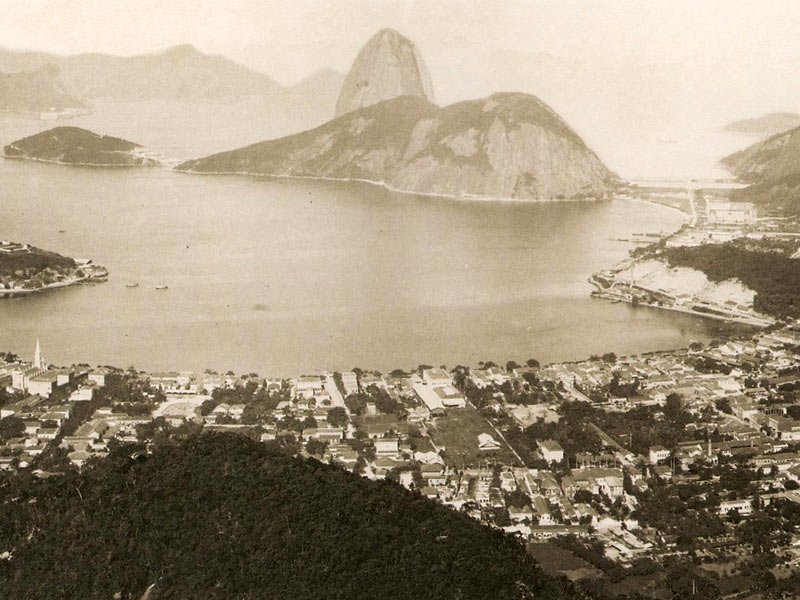Rio de Janeiro is the second-most populous city in Brazil. Commonly referred to as Rio, it is also one of the 27 federative units or states in Brazil. But when we say Rio, we are mainly referring to the city. Rio is a major economic hub and tourist attraction in South America. This city encapsulates a UNESCO World Heritage site region within it.
History of Rio:
Rio was founded by the Portuguese in 1565. It was previously the captaincy of Rio de Janeiro, a part of the Portuguese empire. Later, it became Brazil’s capital in 1763, when it was still part of the Portuguese empire. The beautiful city became the chosen seat of Queen Maria 1 of Portugal after the transfer of the Portuguese Royal Court from Portugal to Brazil. Brazil got the status of a kingdom under the reign of Joao VI of Portugal. It served as the capital of the Lusitanian kingdom till March 1822.

The subsequent years witnessed the beginning of the War of Brazilian independence. It eventually got to serve as the capital of the independent Empire of Brazil (still a monarchy) till 1889. It next got to serve as the capital of Brazil before the status was given to Brasilia.
The worth of Rio in Brazil’s GDP is nearly $201 billion. This figure makes it the 30th largest municipal GDP in the world. Apart from being an important contributor to Brazil’s economy, Brazil also houses several key organizations, including Brazilian oil, mining, and telecommunications companies, and two of the country’s major corporations – Petrobras and Vale. It is also the home to some of the top universities and educational institutes in the region.
Also Read, Chart a human history that goes back 200000 years in Saudi Arabia
While most Brazilian cities’ crime rate is high, authorities in Rio have done well in curbing the crime incidents to make the city a tourist-friendly place. This is one of the many reasons behind the huge popularity of Rio among travelers and backpackers. It is, in fact, one of the most visited places in the Southern Hemisphere. The popularity of Rio among tourists skyrocketed after it hosted the 2016 Olympics and did reasonably well in promoting the whole of Brazil and Rio in particular as a very charming tourist destination.
Rio is located on the western tip of a strip of Brazil’s Atlantic coast. It is very close to the Tropic of Capricorn. Spread across an area of 1,182.3 sq km, Rio is home to over 6,000,000 people. The residents of the city are known as Cariocas. Like all major cities across the world, Rio faces a major pollution problem. The decline of mangroves from Guanabara Bay and the unprecedented increase in domestic and industrial waste have caused significant damage to the city’s ecology. The air is no cleaner, with the concentration of particulate matter already twice the recommended ratio by WHO.
The city experiences scorching heat during the summers, with temperatures often soaring past 40 degrees celsius.
The municipality of Rio de Janeiro is divided into four parts- Central Zone, South Zone, North Zone, and West Zone. According to the 2010 census, the city’s population comprises over 51.2% White people, 36.5% multiracial people, 11.5% Black People, 0.7% Asian people, and 0.1% Amerindian people. The male to female ratio in the city is 46.8% to 53.2%. It is the home to the largest Portuguese population outside of Lisbon in Portugal. Catholic Christianity is the major religion in Rio.
Most popular places in Rio
Cristo Redentor:

Translated as Christ the Redeemer, the Cristo Redentor is the key place to visit in Rio. It is actually a towering statue of Jesus Christ, overlooking the city from the 709-meter summit of Corcovado. Tourists from across the world come to this place to get clicked with Christ. Over the years, Cristo Redentor has become a symbol of Rio. The giant statue was erected between 1922 and 1931. It is a 30 meters tall statue with an arms stretch measuring 28 meters. The weight of the statue is said to be 635 metric tonnes. The best way to reach the closest spot to the statue is via the Corcovado rack railway.
Copacabana:

Copacabana is one of the most beautiful places in Brazil, with a century-old building dotted next to a serene beach. It is the city of view with sparkling golden sand beaches and the eye-pleasing view of Avenida Atlântica, Avenida Nossa Senhora de Copacabana. The Copacabana Palace is hard to miss as it is one of the most glorious places there. At the extreme end of the beach, you will mind the magnificent Copacabana fort. There’s a lot to learn for history buffs in Copacabana. It is a photographer’s paradise.





























